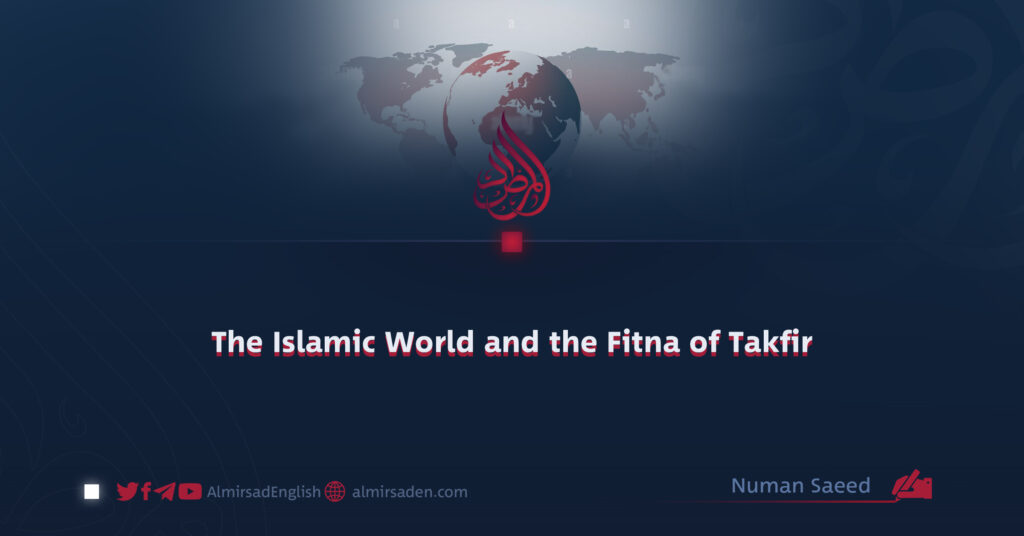By Nu’man Saeed
Throughout Islamic history, the practice of declaring fellow Muslims unbelievers (takfir), waging war against them, and spilling their blood has resurfaced time and again. It is not a modern invention but an ancient malady, one of the earliest and most notorious examples being the revolt of the Khawarij against Amir al-Mu’minin, Hazrat Ali (RA). That rebellion was defined by takfir and ruthless violence against Muslims.
The Khawarij condemned the arbitration between Hazrat Ali and Hazrat Muawiyah (may Allah be pleased with them), branding the appointment of a mediator as an act of disbelief. They went further still, declaring ordinary Muslims who committed major sins to be apostates and insisting that their blood must be shed. Their reasoning was not derived from the clear guidance of the Qur’an but from distorted interpretations of their own making.
Because of their excessive devotion to recitation, they were known in the time of the noble Companions as the “Group of Reciters.” Yet beneath this outward show of piety lay a trail of destruction. When they seized Basra, they slaughtered some six thousand people. That massacre became infamous as the “Reciters’ Seizure of Basra.”
Their violence did not stop there. Under the leadership of Dahhak, the Khawarij captured Kufa. Entering the city’s central mosque with thousands of armed followers at his side, Dahhak raised his sword and declared: “All the people of Kufa must appear before me, one by one, and repent of their disbelief. Otherwise, I will kill everyone here, just as in Basra.” His intention was to reproduce the same bloodshed. Yet Allah, through the wisdom and composure of Imam Abu Hanifa (may Allah have mercy on him), prevented this calamity.
Maulana Manazir Ahsan Gilani (may Allah have mercy on him) records the scene in his book The Political Life of Imam Abu Hanifa. Summarizing his account: when Dahhak issued his threat, Imam Abu Hanifa entered the mosque and confronted him. “Why have you ordered the killing of the people of Kufa?” he asked. Dahhak answered: “Because they are apostates, and an apostate must be killed.” The Imam replied: “An apostate is one who abandons Islam and embraces another religion. The people of Kufa have not done so. They remain upon the faith they were born into. To declare them apostates is baseless.”
These words struck Dahhak to the core. He admitted his error, lowered his sword, and commanded his men to do the same. Thus, the people of Kufa were spared from massacre. In a period when the fitna of takfir had unleashed waves of bloodshed across the Muslim world, this moment stood as a decisive turning point.
In our own time, the same ideology has resurfaced, spreading like wildfire across fragile regions of the Islamic world. Hostile forces have seized upon it and now manipulate it for their own ends. The result has been so destructive that scholars, thinkers, and ordinary Muslims alike find themselves at a loss, with no one certain of safety.
This modern revival first emerged in Algeria several decades ago. There, Islamic organizations and movements had united under the banner of the “Islamic Salvation Front,” which quickly grew into a formidable political force against the secular establishment. When the Front contested elections, it won almost 80 percent of the vote in the opening round, a result that stunned the secular powers of the world. To prevent their victory, the elections were annulled and the military seized control.
What followed was a campaign of ruthless suppression aimed at dismantling Islamic movements. Every tool of oppression was employed, and conspiracies were carefully orchestrated. Among the most devastating was the calculated spread of Khawarij-like ideology within the movements themselves, deliberately inciting internal takfir and fratricidal conflict. Tragically, the scheme succeeded. In less than a decade, nearly one hundred thousand Muslims lost their lives.
Even more painful than the bloodshed has been the failure to preserve its history. Appeals to research institutions and scholars to document Algeria’s tragedy have been largely ignored. The spirit of scholarly inquiry and documentation has grown weak in much of the Muslim world, and no comprehensive study has yet been produced. This silence leaves the Ummah vulnerable, especially its younger generations, who remain unaware of the lessons buried in that dark chapter.
The pattern repeated itself in Egypt, Syria, Iraq, and elsewhere. Movements that initially rose in resistance to tyranny were gradually steered toward takfir and internecine fighting. The Khawarij mindset was deliberately nurtured in their midst, ensuring their collapse from within.
A similar attempt was made in Afghanistan. Yet, by the grace of Allah, the Islamic Emirate of Afghanistan (IEA) was able to confront this challenge and turn the tide. Through firm measures, it succeeded in navigating the crisis to its advantage. These measures included bringing all groups and organizations under one authority, dissolving movements outside Ahl al-Sunnah wal-Jama’ah, establishing nationwide unity under the Hanafi school of jurisprudence, exposing the doctrines and history of the Khawarij, conducting decisive operations against them, and uniting scholars around a clear and consistent definition of the Khawarij and their ruling in Islamic law.
Today, by Allah’s mercy, we live under an Islamic government. Our conditions are far more favorable than in many other lands. Resources are within reach, opportunities continue to expand, and our capacity for action grows stronger with time. The period of despair and lament has ended. The age of endless disputes and fruitless debates has passed. What is needed now is for scholars, writers, and research institutions to step forward, investigate these fitnas with seriousness, and provide the Ummah with the clarity and guidance it requires to protect itself, both now and in the generations to come.
